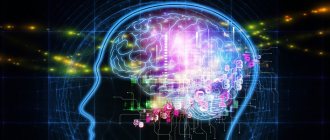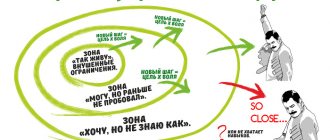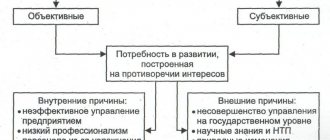Neurolinguistic programming is a popular and hotly debated area of practical psychology. The relevance of this subject is due to a number of reasons.
Firstly, NLP methods are at the intersection of several disciplines: psychology, psychotherapy, programming and linguistics. Secondly, NLP is a new research direction aimed mainly at practical applications in human life. In addition, although neuro-linguistic programming is often criticized by the academic community, this discipline contains a large number of useful and “working” techniques, which will be discussed in the lessons of this section.
In this online training, you will learn for free how to use key NLP techniques: metamodel, framing, reporting, anchoring, working with states and representational systems, and also get acquainted with the best practices, games, books, videos on this topic.
What it is?
NLP (Neurolinguistic programming) is a field of practical psychology that develops applied techniques that model the techniques and practices of famous psychotherapists and communication masters.
In other words, NLP studies the positive experience of specialists in the field of psychotherapy, Gestalt psychology, psychoanalysis, linguistics, hypnosis, with the goal of using this experience in the future. Essentially, NLP is about modeling the techniques of successful people in order to make these techniques available to the public.
It is worth noting that NLP is not a science, and knowledge, due to the nature of its acquisition, cannot be fully scientifically verified. Moreover, the scientific community is skeptical about this area, and it is rare to find NLP courses in universities. But it is important to understand that the creators of NLP did not have the goal of making a full-fledged scientific theory. It was important for them to find publicly available techniques, revealing the complex techniques of famous psychology practitioners.
Short story
Collaborative work on the creation of neurolinguistic programming was started in the late 1960s by a group of specialists from the University of California: Richard Bandler, John Grinder, Frank Pucelik, led by their scientific trustee, the famous anthropologist Gregory Bateson. The NLP system was developed to answer the question of why certain psychotherapists interact so effectively with their clients.
Instead of exploring this issue from the point of view of psychotherapeutic theory, Bandler and Grinder turned to analyzing the methods and techniques used by these psychotherapists by observing the progress of their work. The scientists then grouped the methods they studied into different categories and presented them as general models of interpersonal relationships and how people influence each other.
The famous specialists whose professional experience it was decided to transform into models were chosen:
| ✔ | Virginia Satir - family therapy. |
| ✔ | Milton Erickson - Ericksonian hypnosis. |
| ✔ | Fritz Perls - Gestalt therapy. |
The first results of studying the practical skills of these psychotherapists appeared in 1975 and were published in the work “The Structure of Magic. Volume 1" (1975). Then, extended research materials on the model were presented in the books “The Structure of Magic. Volume 2" (1976) and "Changes in the Family" (co-authored with Virginia Satir, 1976).
The result of this work was the so-called Meta Model, which you will learn about in the first lesson of our training. This model served as the foundation for further research in this area and led to the creation of a whole area of practical psychology. Today NLP is an open methodology that has many followers, complementing it with proprietary developments.
You can read more about the history of NLP on Wikipedia.
Application of NLP skill
NLP tries to teach people to observe, understand and influence themselves and others as effectively as experienced psychotherapists and communication masters do. Therefore, NLP has a wide range of applications, which can include such areas as:
- psychotherapy,
- time management,
- oratory,
- education,
- management and management,
- sales,
- acting,
- jurisprudence,
- writing and journalism.
NLP allows you to develop the communication skills that every person needs. In addition, NLP helps personal development: the ability to correctly understand your emotional states, perceive the world around you in a diversified way, and achieve flexibility in behavior. Advanced NLP techniques allow you to treat phobias and psychological trauma, maintain good mental shape and maintain a high level of performance.
If you want to find out to what extent, even at an intuitive level, you now know NLP techniques and can apply them to develop your career, we invite you to solve the case:
Statistics Full screen
How to learn it
In accordance with the main principles of NLP, almost any person is able to master all the techniques of this theory. As a rule, popular training centers distinguish three main stages of training in neurolinguistic programming:
| 1 | NLP practitioner course: learning NLP skills and the ability to apply them in practice. |
| 2 | NLP Master course: in-depth study of NLP techniques. |
| 3 | NLP trainer course: ability to work with an audience and knowledge of the features of teaching NLP. |
Often, trainings can last several weeks and can be quite expensive, but face-to-face courses are not the only way to learn the basics of neurolinguistic programming. After researching the experience of teaching this skill, we came to the conclusion that all NLP techniques (or at least most of them) can be learned independently. We have prepared a number of lessons that will help you develop useful competencies for full mastery of the techniques of this psychological direction.
Want to test your knowledge?
If you want to test your theoretical knowledge on the topic of the course and understand how suitable it is for you, you can take our test. For each question, only 1 option can be correct. After you select one of the options, the system automatically moves on to the next question.
Statistics Full screen
Neuro Linguistic Programming - Basic Information
NLP techniques appeared as a simplified version of the techniques of psychologists and psychotherapists. They are designed to help people find wholeness. Therefore, using NLP methods, you can correct other people's behavior and put yourself in order. The main idea of neurolinguistic programming was to create a favorable environment for communication. In this article, we demonstrated the basic NLP techniques, from which you can learn the basics of manipulation yourself.
It is convenient to get acquainted with the basic part of publicly available methods of neurolinguistic programming in the form of a list:
1. NLP speech techniques:
- Truisms;
- Assumptions;
- Opposites;
- Double questions;
- False choice.
2. NLP technique - anchoring
3. Exercises:
- This is not an elephant - this is a fly;
- Big Wash;
- The Musketeers 20 years later.
Next, we will analyze each point of this display in detail.
Why do you need NLP?
NLP lessons
The goal of our online course is to teach you how to use the fundamentals of Neuro Linguistic Programming taught in basic NLP classes. In our training you will not find a complete course in hypnosis and NLP aerobatics, but we have tried to present all the key techniques and concepts that underlie hypnosis and advanced concepts.
If you just want to get acquainted with the basics of NLP, then you can take the lessons presented below. Lessons 1 and 2 cover language patterns, Lessons 3 and 4 cover nonverbal communication techniques, and Lesson 5 covers effective self-development techniques.
Lesson 1. Language model or NLP metamodel
One of the earliest and most popular concepts in NLP is the language model or, as it is called, the metamodel. This model helps to better understand the meaning of human speech. The thing is that when expressing our thoughts, we cannot absolutely accurately convey to our interlocutor what we are thinking about. We miss something, believing that it is already clear, and we unintentionally distort something. But can our interlocutor, colleague, or subordinate understand us correctly?
Not always, unless you are a good psychotherapist or psychoanalyst. To properly understand a person, professional psychotherapists ask him special questions that help them enter the deep structure of human thoughts. The metamodel of neurolinguistic programming described in this lesson will help you better understand a person, and in some cases even change his own perception through the use of special psychotherapy techniques.
Lesson 2. Framing and positions of perception
In this lesson you will learn two useful NLP techniques. The first of them, framing, will teach you to frame your thoughts in various frames (frame, translated from English as frame), which will undoubtedly help you develop communication skills. The second technique will allow you to work with five positions of perception and representation of reality. Both of these models can actively influence your speech, making it more flexible.
Lesson 3. Representational systems
In the previous two lessons you were introduced to the key linguistic techniques of NLP. However, no less important in neurolinguistic programming are models for understanding neuroprocesses and their impact on the human psyche. In this lesson we will talk about the influence of the senses on the interpretation of a person’s experience.
Lesson 4. Report, calibration, adjustment
The physiological processes accompanying the moment of communication are no less important than speech itself. It is known that nonverbal techniques are an essential component of any act of communication. The techniques in this lesson will allow you to influence your physiological characteristics during communication, which will help you be a “comfortable” interlocutor when communicating with different people.
Lesson 5. Performance, working with states, anchoring
This lesson will examine NLP techniques aimed at increasing a person’s effectiveness, as well as its impact on one’s own nervous processes. Not many people know that today’s popular methods of improving performance, for example, SMART, appeared within the framework of NLP. This lesson will introduce basic models to help people manage their motivation and emotional states.
Neurolinguistic Programming - Exercises
Now in this part of the article practical sequences of actions will be presented. Practicing these actions on your own can change how you and others perceive reality.
This is what a map of approaches in NLP looks like
This is not an elephant - it's a fly
The essence of this exercise is to remove any far-fetched fears and excessive dramatization. Thus, reduce the effect of stress from the situation.
To turn your scary “elephants” into “flies”, you need:
- Relax and tune in.
- Imagine the annoying situation as clearly and clearly as possible. This must be a disaster in the harshest terms. At this stage, you can give full vent to your feelings.
- Now you need to decolorize it, make it dull and inconspicuous, like a black and white photograph that has been pretty worn out by time.
- Next, you need to move the situation as far as possible from your perception. Imagine how it moves away towards the horizon until it turns into a hard-to-see point.
- Then you need to peer into it. Try to distinguish all the details until you get bored and tired.
- And the final step is to find the positive in the situation. It doesn’t matter whether it’s a secondary benefit or a consolation that the problem didn’t ruin everything. But something positive will definitely remain. Losing a phone does not make a person poor. Losing a job can provide incentive to look for a new job, perhaps even better than the old one. And the situation with the burnt dacha is consoled by the fact that its owner or relatives and friends were not injured during the fire.
With the help of this exercise, you can get rid of the habit of exaggerating the difficulties that have arisen in life.
The Elephant-Fly NLP technique is one of the main
Big Wash
This technique works great when a picture slowly but surely drives a person crazy and keeps popping up in his memory. Doesn't let you live in peace. If neither meeting with friends nor going to work helps, it’s time to put the basics of NLP into practice:
- First you need to wait for the negative event to emerge in your memory. It does not need to be induced artificially.
- Afterwards, there is no need to drive him away, trying to hide from this problem.
- You need to mentally imagine this problem as a stain of dirt on a shirt. Then set the task to wash it.
- Make the most of your imagination. You need to mentally take out a vat of water, add the best clothes cleaning product there and completely rub off the stain. Imagine how it will gradually fade until it completely dissolves.
This exercise is good for paranoia and obsessive thoughts.
The Big Wash - Established NLP Technique
Musketeers 20 years later
This technique allows you to see how insignificant those problems that now seem extremely important are. Oddly enough, many people practice it without even realizing it.
- First of all, you should relive the exciting situation. Let it be a bad grade for an exam or a defeat in a competition, it doesn’t change the essence.
- Next, you need to imagine yourself in 20 years. It should be an optimistic future, but not cut off from the ground. You should not imagine yourself as the richest person if there are no conditions for the realization of such a dream.
- Just enjoy your beautiful dream.
- Then you need to remember the exciting experience now. After realizing how much it can interfere with enjoying life in 20 years. There is a high probability that in 20 years there will be no time for this trifle.
This exercise, in its essence, focuses not so much on working with perception, but on philosophical comprehension.
“Everything in this life passes”
King Solomon
The exercise clearly demonstrates a simple truth. Small everyday troubles in our ever-changing world are quickly forgotten. Don't turn them into a disaster on a grand scale!
Here he is - a pure NLP practitioner
How to take classes
To successfully master basic NLP techniques you will need:
- Study the theory, and not just strive to memorize the sequence of actions.
- Train yourself by completing the course exercises.
- Try to carefully use the learned techniques in practice.
It is the constant application of the acquired knowledge in life that will allow you to truly master neurolinguistic programming. It is also important to note that applying NLP knowledge will increase your attentiveness during communication and teach you to independently model (create) successful methods and techniques.
In addition, to study NLP, it is recommended to master several general rules, the so-called presuppositions of neurolinguistic programming.
Where to start learning NLP?
It is usually difficult for beginners to understand all the methods and techniques of NLP.
There seems to be too much information and it is difficult to understand. People who want to start studying NLP face a logical question: where to start? Before you begin to comprehend complex methods and techniques, it is naturally best to understand where NLP begins. In books on NLP for beginners, the main concepts are presented first, because the entire system is built on them.
First of all, it is necessary to understand the importance of the three broad components and central concepts of neuro-linguistic programming - subjectivity, reason and learning. So you will understand where NLP begins.
Presuppositions - basic principles of NLP
While modeling the techniques of famous psychotherapists, NLP developers identified several general simple rules that these specialists used in their works. Scientists combined the studied material into a common system of presuppositions.
Presuppositions in neurolinguistic programming (NLP) are axiomatic beliefs used as a tool to facilitate the achievement of the most effective results from the techniques used. The essence of using presuppositions is that for the most effective training of NLP, they must be accepted a priori (as an axiom). The main presuppositions of NLP are:
| 1 | The map is not the territory. Just as the most detailed map will never be an accurate representation of the territory, so the words we use do not contain an absolutely accurate representation of our experience, of which they are a representation. In NLP there are two levels of phenomena: external reality and internal subjective reality. In other words, NLP does not work with reality, or “territory,” but with subjective perceptions and beliefs about reality (“maps”). |
| 2 | The person with the most flexibility has the most influence in the system. In any system, the person with the most flexible behavior will be able to consider more choices and will therefore have more influence in the system. Accordingly, the more options you have in your communication toolbox, the less likely you are to find yourself stuck. |
| 3 | There are no defeats, only feedback. This presupposition is borrowed from William Ross Ashby's principle of the importance of feedback loops in information theory. In neuro-linguistic programming, nothing is considered in terms of “success” and “failure.” Unsuccessful results following an action are not a cause for disappointment and despair, but valuable feedback information that determines the effectiveness of what you do. |
| 4 | The mind and body inevitably influence each other. This is because the human body contains approximately 100 billion nerve cells. Most of these cells are found in the brain. Each of the hundred billion neurons is connected to at least a thousand others. And, therefore, everything in us is interconnected, especially the mind and body. |
| 5 | Personality and behavior are different phenomena. We are more than our behavior. We may do different things in different situations, and often do so unintentionally. Thus, people's behavior does not define people themselves. |
| 6 | The basis of any human behavior is a positive intention. This presupposition is borrowed from the belief system of Virginia Satir. Its essence lies in the fact that even a person's seemingly negative behavior is considered in NLP as an attempt to fulfill a positive intention (which he may not be aware of). |
These are not all the basic principles that are highlighted in textbooks on NL programming. If we put together all the presuppositions of famous NLP authors, we can make the following list:
Background assumptions regarding mental processing:
- “Map” is not “territory”.
- People's reactions correspond to their cards.
- The meaning depends on the context.
- The mind and body inevitably influence each other.
- Individual skills result from the refinement and consistency of the use of representational systems.
- We respect other people's models of the world.
- Personality and behavior are different phenomena. We are more than our behavior.
- Each behavior is practical and useful in a specific context.
- We evaluate behavior and change in terms of context and ecology.
Communicative presuppositions:
- We can't help but communicate.
- The way we communicate affects our perception.
- The meaning of communication lies in the reaction it evokes.
- The person who sets the frame of communication controls it.
- There are no defeats, only feedback.
- The person with the most flexibility has the most influence in the system.
- Resistance indicates a lack of rapport
.
Presuppositions concerning learning, choice and change :
- People have the internal resources necessary to achieve their goals.
- People are capable of learning anything in one try.
- Any communication should increase the number of available alternatives.
- When performing any action, people choose the best option available to them at the moment.
- We can control our brains and control the results.
You can read more about presuppositions in NLP in the textbook “NLP Practitioner”, as well as on Wikipedia.
Neurolinguistic Programming - Speech Techniques
These techniques are exactly the same neurolinguistic programming as most people imagine it to be. In essence, speech techniques involve the use of certain phrases, changes in intonation, facial expressions and body position. NLP is largely based on “mirroring”, on the ability to “copy” an interlocutor. This is necessary to become “one of our own” for him. And then he will be much more receptive to everything you say.
Let's start by looking at NLP speech techniques. They are often used in advertising, speeches by politicians, and simply in communicating with people. It’s strange, but different people use certain methods from this area unconsciously, without prior training. This happens in the family, at work, in public places, and in any other social places. Therefore, the benefit of a logical understanding of these techniques is the ability to recognize and resist attempts at manipulation. Also be able to direct communication in the right direction.
Copying your interlocutor is the main NLP tool
NLP - Truisms
The word “truism” itself is an Anglicism and in its original form means “banality.” This is a statement that is something so commonplace that it is perceived without any criticism, simply as a given. Classic examples are phrases like “boys don’t cry,” “only fools argue,” and so on. A person who uses these and similar wordings of phrases forces him to do what he needs. He bypasses beliefs that refute stated statements.
For example, if one individual needs to force another to take an active position in some issue, he will say: “Water does not flow under a lying stone.” As a result, you clearly convey the message that only active behavior can correct the situation. If you need to reason with another, you can remember the phrases “A bad head gives no rest to your feet” and “if you rush, you will make people laugh.” Perhaps, many proverbs are both an expression of the life experience of generations and a good way to motivate others to take the necessary actions.
Truisms are a classic practice in neuro-linguistic programming
NLP - Assumptions
Assumptions are manipulation based on linking two events together in order to force, after completing one action, to proceed to the second.
In real life, such messages are demonstrated by phrases like “if you go to school, apologize to your classmate.” At the same time, it is not at all specified whether the student wants to apologize to his classmate and whether this is necessary. A person is not given a choice at all, and he unconsciously perceives this instruction. Thanks to phrases like these, you can turn an innocent trip to school into a rather complex moral task. This irrational approach still works and in the human mind, bypassing his will, two not particularly interdependent quantities are actually connected.
Another NLP technique that greatly influences communication
NLP - Opposites
This principle is clearly visible in advertising, which often conveys the hidden message “buy our product and become like a movie star.” Two situations are also connected. Only the “thrown” situation is no longer an order, but a kind of promise.
The desire for a dream pushes you to do what the manipulator wants. A fairly striking example is the familiar phrase “if you study well, you will become a boss.” At the same time, it is not specified how good studies are guaranteed to lead a ninth-grader to the chair of the general director. It is simply an abstract promise that, on an unconscious level, connects two independent positions in the human psyche.
Opposites in NLP will help you in your work
Double questions
They contain two questions. The first one acts as an introductory one. And the second, like the previous ones, is perceived unconsciously as the ultimate truth.
Typically, constructions like:
- Have you realized how...?
- Don't you think that...?
For example:
“Have you realized how right you did by coming here?”
“Don’t you think there are no good places to celebrate in this area?”
Like the previous ones, the technique seems quite simple, but it has a very impressive effect.
Another NLP practice
False choice
In this case, the person is given the opportunity to choose. But in fact, this is a choice between two positions, equally beneficial to the one asking the question:
- Will you thank him with money or a gift?
- Are you going to become a doctor or a nurse?
As you can understand, the effect is largely similar to the previous ones.
Important point! You need to give a false choice very unobtrusively
Anchoring technique
The anchoring technique is not exactly neurolinguistic programming in its usual form. This is rather a basic principle that can be considered the basics. Experts who know the methods of neuro-linguistic programming sometimes even say the following phrase: “When we say “anchor” we mean “NLP”, when we say “NLP” we mean “anchor”.
Essentially, an anchor is a trigger. This is this or that place, song, thing, etc., which evokes strong feelings in a person due to its connection with memories and experiences. As a child, a person was fascinated by a computer game and spent a lot of time playing it. Memories of playing through the game evoke a long-lost sense of fabulousness. If he had been introduced to this game as an adult, he might have rated it as simply good. Go through it once and never come back. But precisely because it is an anchor that makes him feel like a child, he can consistently spend a couple of days on each vacation to go through it again.
The same applies to anchors with a minus sign. This same man had an extremely harmful grandmother as a child. Then, perhaps, the negative experience was reinforced at school during interactions with older teachers. It is likely that even at 40 years old he will experience some feelings of stress when he encounters an older woman.
In practice, the anchor is used to control certain habits. For example, punishments for skipping school or not doing homework are a negative anchor. The key to which is unfulfilled obligations, after which punishment occurs. Also, a similar experience is used in the treatment of alcoholism. After drinking alcohol, give an emetic tablet. Over time, one type of alcohol will become associated with nausea.
A man is passionate about his “anchor”
Additional materials
It is impossible to describe all possible models and techniques of neurolinguistic programming within one online course. This is also due to the fact that this research area continues to develop, modeling new psychological and linguistic techniques. Many of these techniques are quite specific, so they will not be of interest to all 4brain readers. To make it easier for you to find the information you need, we decided to provide links to additional materials (books, videos, articles) that are not included in our course.
Books
You can find many NLP textbooks in stores, but often these books contain little useful information. To help you better navigate the literature on neurolinguistic programming, we have selected a list of the most popular and proven books. It included:
- "Tricks of the tongue." Robert Dilts.
- "From frogs to princes." John Grinder.
- “NLP Practitioner: Complete Certification Course. Textbook of NLP magic. Bodenhamer B., Hall M.
- "The art of persuasion." Richard Bandler.
- "77 Best NLP Techniques." Michael Hall.
- And some others.
Video
Due to the fact that many NLP techniques represent specific speech techniques and behaviors, it is difficult to learn all of this just by reading a text description. An important component of training is visual examples of people who have already mastered the required technique, as well as master classes and lectures by leading experts. We also tried to include videos with such examples and presentations in our training and additional materials.
Other materials
In addition, pay attention to our other online trainings that complement NLP knowledge:
- Training in public speaking and writing will help you better master your oral and written language skills.
- A course of lessons on human psychology will introduce you to the basic concepts of psychology: personality, motivation, society, development.
- In leadership classes, you will learn about the qualities of real leaders and management styles.
And finally, some more useful information.











